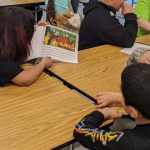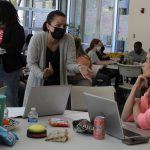
The TAF Learning Model: Impact and Origins
This blog post was written by a guest contributor, Conan Lu.
Conan interned with the TAF communications team for the summer of 2022 in between his senior year of high school and starting college.
STEMbyTAF is the core educational model TAF uses to manage its schools. It’s been incorporated into schools like TAF@Saghalie and TAF@Washington Middle School. STEMbyTAF is comprised of four key pillars. STEM integration aims to expand opportunities for student engagement in STEM fields. Interdisciplinary project-based learning gives students the chance to explore concepts and skills through interactive projects. Educational technology seeks to enhance student learning through technology. An emphasis on College and Career Readiness prepares students for work and higher education. All four of these pillars are built upon a commitment to racial equity.
TAF’s education model encompasses important values – autonomy and inquiry being a few – that have rich pasts in educational philosophy and bright possibilities for the future of education. Denise McLean, current Director of Professional Learning and former teacher with the STEMbyTAF model, shares some insights about the model in practice.
STEMbyTAF in action
When implementing interdisciplinary project-based learning in action, teachers learn to engage with their students, give them autonomy, and have space to delve into topics that are relevant to students’ lives. For example, McLean and her grade level team designed a long-term project that tackled the issue of ethics in science. Students chose a work of literature to read that centered this issue – student picks were diverse, from Brave New World to 1984. More importantly, they were works that they actively wanted to read. Students engaged in dialogue about these books, as well as their implications today. At the end, they created a “mockumentary” to showcase their learning of the novel and their themes, which provided space to demonstrate creativity while cementing key concepts from the unit.
McLean’s team took the project a step further, however. After the mockumentary, students discussed solutions to injustices in the STEM field. Teaching with the STEMbyTAF model encourages students not only to examine the world as-is, but to also position themselves as changemakers.
The STEMbyTAF model illustrates a larger tenet of the Technology Access Foundation’s mission: viewing students through their assets, not their deficits. Traditional education tends to focus on correcting behavior or learning styles deemed deviant. This comes from a belief that teachers have authority over knowledge, and ought to deliver this knowledge to students unidirectionally. However, as McLean describes, STEMbyTAF encourages teachers to view students as already possessing immense knowledge. This can come from their identity, their lived experiences, and more. Fundamentally, when students feel respected and honored for their potential, it improves learning.
The history of student-centered values
TAF’s work in schools has been an important vehicle for bringing the STEMbyTAF model to fruition. However, many of the underlying principles that make STEMbyTAF work didn’t come out of thin air. They are also bolstered by decades of research and social thought into making education more just for students.
Philosopher John Dewey argued that students learn best with experiential and inquiry-based learning. He was a believer in Constructivism, a learning theory that proposes that students learn by constructing their own understandings of knowledge based on their experiences, rather than passively receiving knowledge. Teaching practices used today, like discussion circles and student-led projects, have their roots in this school of thought.
Paolo Freire, author of the formative text Pedagogy of the Oppressed, was another thinker who centered students. Prior to his work in educational philosophy, he created literacy programs in Brazil during political turmoil in the 1950s. His background supporting people in his community – farmers, workers, often without the state’s support – gave him a keen awareness of effective teaching techniques.
He described the traditional education system as a “banking model,” where students act as vessels or containers for knowledge. Freire argued that education should instead acknowledge students’ critical thinking and experiences with a problem-posing model.
In addition, he recognized the political failures of the society he was teaching his students in. Beyond language acquisition, he worked to promote consxientizacao – critical consciousness, in English. Freire taught using situations relevant to students’ lives, inspiring student-driven change by helping them understand the nature of their oppression.
The work of both constructivists and Freire celebrate student agency. Teachers should facilitate student learning, rather than being agents of information delivery. These values that shape teacher-student relations can transform educational spaces in the future.
STEMbyTAF translates these foundational principles of student growth to the 21st century. Interdisciplinary project-based learning allows students to demonstrate creativity and personal experiences. STEM integration, educational technology, and career readiness, prepare students for the real world. A foundation in racial equity allows students to visualize themselves as changemakers. With these pillars, students are equipped to not only study the world, but change it.
Further reading
Paolo Freire – Pedagogy of the Oppressed





